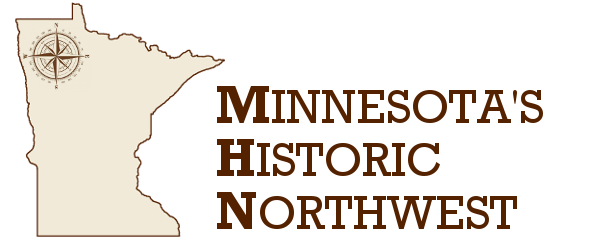| Red Lake County, Minnesota, has a rich and varied history in which the Red Lake and Clearwater Rivers have played a central role. These rivers provided the proper habitat for a wide range of wildlife. Over two hundred years ago this wildlife attracted the Chippewa (Ojibwa) Indians who were following the fur trade business west from the great lakes region.
By 1798 Jean Baptiste Cadotte had established a trading post near the junction of the two rivers in or near the present day Sportsman’s Park in Red Lake Falls. As oxcarts began crossing the area while transporting goods between St. Paul, Minnesota to the south, and the Selkirk or Red River Colony (present day Winnipeg, Manitoba, Canada) to the north, the “Old Crossing” of the Red Lake River near Huot, Minnesota, became a place of historical importance. At the Old Crossing in 1863 a peace treaty was signed between the Red Lake and Pembina bands of the Chippewa Indians, and the U.S. Government. This treaty ceded to the United States nearly 11 million acres of some of the most fertile land in the world. In 1876 Pierre Bottineau, the famous Metis (of mixed French and American Indian blood) guide, brought the first settlers to the area, 119 families of French Canadian descent who founded the towns of Red Lake Falls and Gentilly. Settlers of European descent followed, attracted to the same waters that attracted the Indians and trappers before them. Newspapers of the time advertised the abundant supply of waterpower provided by the two rivers. The area of the natural confluence of the Red Lake and Clearwater Rivers has a long history of human habitation. Long before the first white explorers and fur traders came to the area, this river crossroads was a favored Indian camp and village site.
During the 18th century, European explorers found their way into what became northwestern Minnesota, and in 1794 Jean Baptiste Cadotte, Jr., established a fur trading post here for the British Northwest Co. Subsequently, the country came under the American flag and the British traders left. It was not until the Old Crossing Treaty was signed with the Red Lake and Pembina bands of the Chippewa Indians in 1863 that the Red River Valley was opened for settlement. Among the earliest settlers were several French Canadian families in 1876. During the 1880’s and 1890’s numerous Scandinavian and German immigrant farmers came to the region. Red Lake Falls, incorporated as a village in 1881 and as a city in 1897, became the county seat of the new Red Lake County established Dec. 24, 1896, in a separation from Polk County. Large lumbering operations occurred in Red Lake Falls until 1911, but farming soon became the premier economic activity. Small tract farming was followed by the opening of large grain farms, and a sizable milling industry grew out of the farming pursuits because of the waterpower available from the river rapids and falls. Red Lake Falls was at the forefront in the water powered industrial movement. Contact John Thibert, President |
